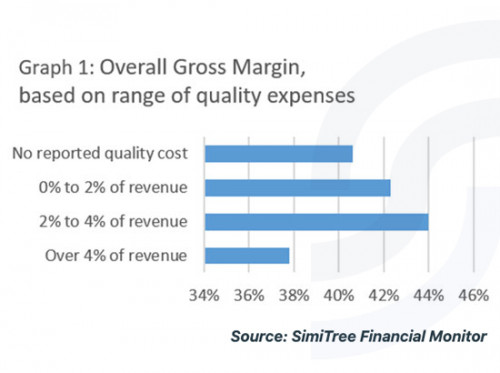Quality scores play an important role in home health and hospice, driving decisions by both payers and referral sources and prompting new scrutiny on how quality management spending impacts scores.
The thorny question for agency leaders: What is the right amount to spend?
In recent years, many home health and hospice agencies have made significant investments in improving their quality programs, according to Brian Martin, Vice President of the SimiTree Financial Monitor.
Medicare’s new Conditions of Participation, implemented in 2017, requires Quality Assessment and Performance Improvement (QAPI) programs with ongoing data monitoring and reporting. Agencies responded by building QAPI departments, hiring new quality leaders, reimagining processes, implementing reporting systems, and outsourcing coding and documentation review.
The Centers for Medicare and Medicaid Services (CMS) continues to emphasize quality scores with new public reporting requirements for both home health and hospice. Implementation of the Home Health Value Based Purchasing (HHVBP) will escalate the financial importance of quality, with increases or decreases in reimbursement hinging on certain quality metrics.
“No one wants to risk compliance deficiencies, lower reimbursement, or not being competitive in their market,” Martin said. “Forward-thinking agencies have been taking a fresh look at their quality management and improvement efforts, to help both themselves and their patients.”
Finding the ‘sweet spot’
Quality costs may entail a variety of expenditures, but generally include staff costs related to improving the quality of care, operations and finances, Martin said.
There’s no one-size-fits-all formula, and the amount spent on quality costs will vary by agency, but Martin said one consideration may be important for determining how much to allocate to quality costs.
“To answer the question of how much is the right amount, we considered the relationship between quality expenses and organizational gross margin, one potential indicator of the effectiveness of a strong quality program,” Martin said. The results show that a higher rate of spending on quality was associated with a higher gross margin – to a point. (See accompanying graph.)
“The data demonstrates the value of an investment in quality operations, but also that just throwing more money at the problem doesn’t necessarily solve it,” Martin said.
“The key is finding the sweet spot, the balance point of QAPI costs being beneficial before hitting that point of diminishing returns.”
Other benefits of a strong quality program not necessarily reflected by gross margin should also be considered, Martin said. Impact on patient outcomes, staff engagement, or agency referrals and growth are also important.
SimiTree offers helpful data
Having the right data to assess the drivers of cost within your agency is especially important in this era of increasing costs and potentially decreasing reimbursement. Understanding the relationship between key measures compared to your peers can be valuable for making data-driven decisions about how to effectively run your organization and ensure its long-term success.
To gain more insight into QAPI or other back office administrative costs, gross margins by service line or payer, or financial operational benchmarks, consider subscribing to the SimiTree Financial Monitor, an industry-leading analytics tool.
SimiTree delivers the in-depth proprietary financial report to subscribers in quarterly increments to enable internal analyses, industry comparisons, and trend identification for stronger and more-informed decision making.
Read more about The Financial Monitor here.

